Cotyledon orbiculata (Pig’s Ear) is a popular South African succulent that many people in Mediterranean climates grow. Its popularity continues to grow thanks to more water-conscious gardeners incorporating it into their landscapes. Even though these plants do great with minimal water, I have found that they can handle more water than the blogosphere would have you believe. One of my Cotyledon orbiculata is planted in an efficiently draining and sunny area that gets the same amount of water as my other plants (including daylilies) in the sprinkler zone. The fact it resides in decomposed granite certainly helps, but the extra water has turned a small plant into a very nice-sized clump, as seen below.
The South Africans identify five varieties based on differences in leaf and flower shape. The one they call Cotyledon orbiculata var. oblonga (Chalk Fingers) has actually naturalized here in some parts of California. I currently grow two really nice forms of Cotyledon orbiculata var. orbiculata. Both the forms I grow have the desirable characteristics of having a grey leaf color with a red line around the margin and each form large, full clumps.
Here is my favorite form, growing in a Balinese lava stone pot. The leaves are almost snow white in color and the red margins really stand out. The plant in front is Crassula capitella ‘Campfire,’ which gets a nice red leaf coloration in winter and spring. (If you are wondering why the landscape is so bare in the background, you can read about it here.)
The leaves are quite different between the two forms I grow. The leaf on the left comes from the plant in the first picture of the post and the leaf on the right is from the potted plant you see above.
The orange hanging tubular flowers first appear in summer (the photos here were taken in June). Unless you actually look under the hood, so to speak, you really won’t see how pretty the individual flowers are. They have a fluorescent look to them in the right light. I have been told that bees really like the flowers but for some odd reason I have not found any honey bees on mine when in bloom. Perhaps I have too many other flowers to keep them occupied? Hummingbirds, on the other hand, really seem drawn to the flowers. Watching them position themselves to get the nectar from the upside-down flowers gives you greater appreciation as to how much dexterity hummingbirds really have.
Because it is so easy to propagate Cotyledon orbiculata by cuttings, I find no reason to wait for the plant to make seed. The flowers last for a few weeks and once spent, I deadhead blooms when they turn brown. The Cotyledon orbiculata var. orbiculata form being grown in my lava stone pots is a quite popularly requested plant for cuttings. For this reason I like to share the wealth and always have some ready for a garden visitor who might ask.
The only real pest that I have run into are snails, and these are mostly a winter issue. Old leaves that have fallen off take a long time to break down, giving snails a great place to hide and breed. For this reason I will throw some pet-safe snail bait into the plant a few times a year. I have not had any major snail issues since doing this. So other than snails, Cotyledon orbiculata is a trouble-free grower.

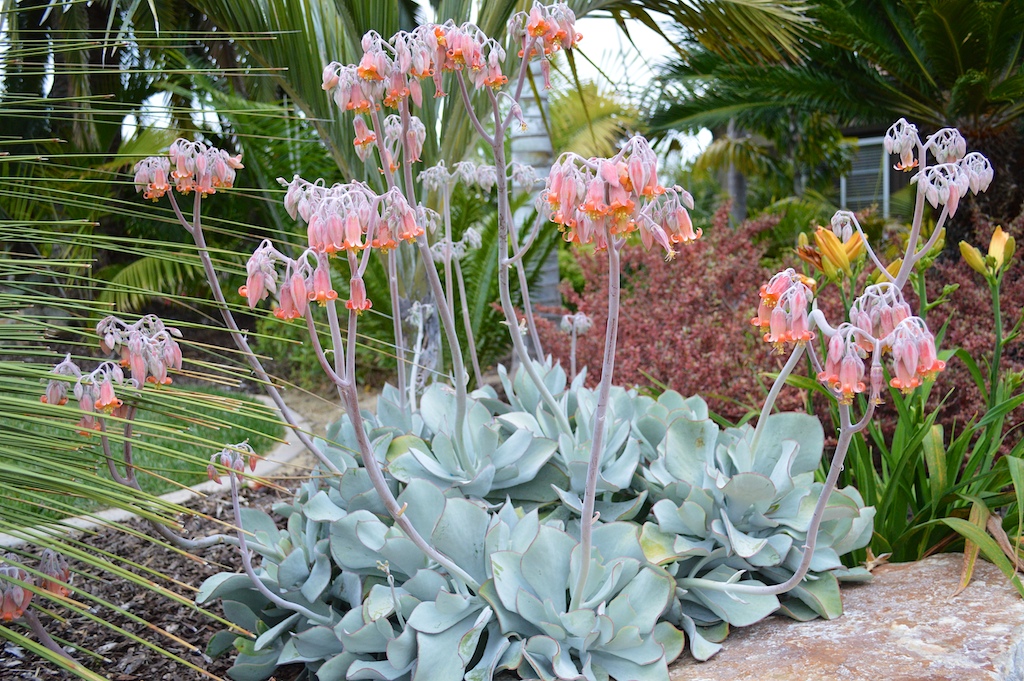

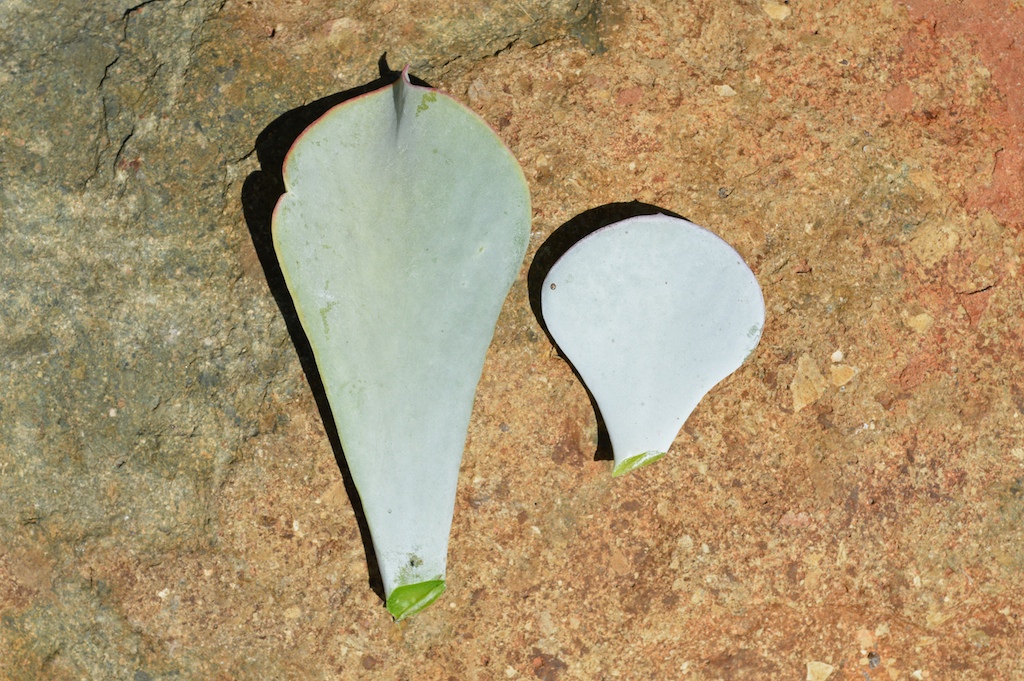

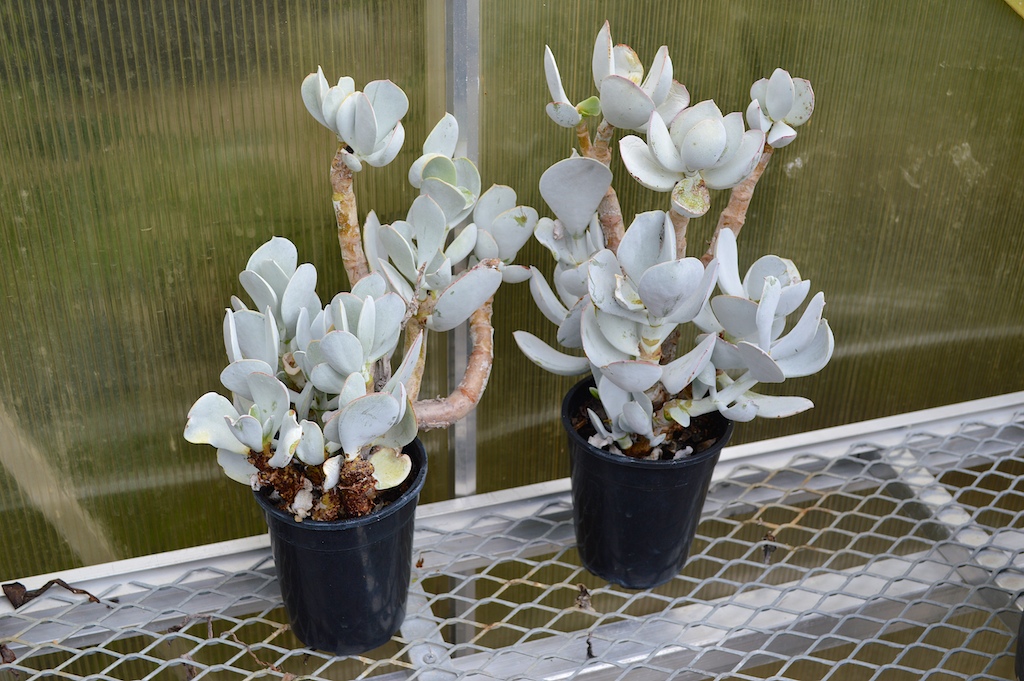
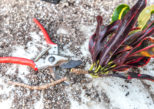


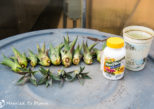
Hi, thanks for posting info on these plants. We have recently bought a property and inherited loads and loads of succulents in abandoned pots, many half dead and dying, including many many mangled Cotyldedon… So I searched for info on caring for them and came across your page. Are they ok to prune back quite hard? At the moment they are in ridiculous shapes and bent and root bound in their pots and I’m hoping to salvage some of them! Would appreciate any advice on resurrecting neglected succulents such as these! Cheers!
Hi Caroline. Yea, you can prune them back. Maybe do it in increments until you get the preferred shape.
Thank you!
Hi there,
I came across this plant and wanted to understand how it blooms. 2 I saw had few leaves and multiple flowers atop; however one next to it had many leaves, but no blooms. Do you know why that would occur?
They like water I have found. If you don’t give them water at least once a week in summer, they don’t grow full.
Hi! I’m trying to root a cutting of Chalk Fingers that I took home with me on a trip. It’s been more than a month now with no real roots appearing (I planted it in a small pot with some soil, and have been watering.) two of the leaves are starting to shrivel up a bit too. I really want this to root, do you have any advice?
I’m wondering if I should have let the stem dry out a bit before planting?
Thanks so much!
Needs to dry before you can put in a well draining mix and root it. Do not water it until you know it has roots. If this doesn’t work, not sure.
How do you propagate this?
Super easy. Cut off a stem. Let it dry and hard for a few days, then place in pot of pumice or other free-draining mix. Should root in a few weeks. Water once you see new growth happening.
How do you dead head the blooms?
I cut the flowers off at the base.
The petals slide off and reveal a bright green bud underneath! I’m excited to see what happens next. If you cut them, do they grow back?
No, but if you cut the flowers off before they develop, the plants wants to flower again.
what can I use to kill the bugs around the flower’s bud